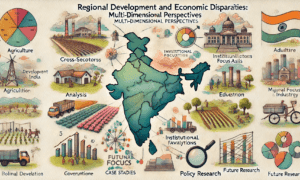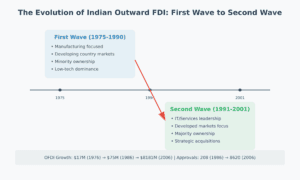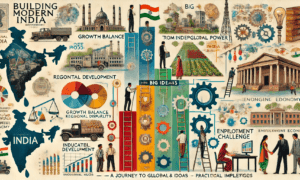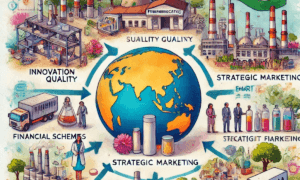The Big Shift: Indian Companies Go Global Picture India in the 1990s – a nation opening its doors to the world after decades of looking inward. This economic liberalization sparked something remarkable: Indian companies began venturing abroad in unprecedented numbers, not just to sell their products but to establish operations, acquire companies, and conduct research and development globally. This essay explores three key dimensions of this transformation.
What Makes a Global Indian Company?
The Right DNA New research reveals what sets internationally successful Indian manufacturing firms apart:
- Larger in size
- More technologically advanced
- Higher productivity
- Better worker compensation
- Strong export experience
- Consistent R&D investment
Evolution Over Time The characteristics needed for global success have shifted:
- In the early years (1990s), basic operational efficiency was key
- By the 2000s, technological capabilities became crucial
- Today, firms need a sophisticated mix of capabilities to compete globally
Innovation Without Borders
The R&D Revolution One of the most fascinating developments is Indian companies establishing research centers abroad. This represents:
- A strategic shift from cost advantage to innovation leadership
- Access to global talent and advanced infrastructure
- Integration into worldwide innovation networks
The Spillover Effect When Indian companies conduct R&D abroad, interesting things happen back home:
- Parent companies increase their domestic R&D spending
- Knowledge flows both ways between foreign and Indian labs
- More sophisticated innovation emerges from the combination
The Pharmaceutical Success Story
A Tale of Transformation The Indian pharmaceutical industry offers a perfect case study:
- From copying medicines in the 1970s to creating new drugs today
- From domestic focus to global presence
- From basic manufacturing to sophisticated research
Keys to Success The industry’s rise involved multiple factors:
- Strategic government policies
- Family ownership providing stable leadership
- Access to global capital markets
- Strong process development capabilities
- Smart international partnerships
Looking Ahead: Policy Implications
For Business Leaders:
- Consider R&D internationalization as a strategic priority
- Build capabilities systematically before going global
- Use partnerships to access new technologies and markets
For Policymakers:
- Support firms’ international R&D efforts
- Help create innovation ecosystems
- Foster links between domestic and international research
Academic Abstract:
This introduction to the special issue examines the evolution and characteristics of Indian outward foreign direct investment (OFDI) following the economic liberalization of the 1990s. Drawing on three empirical studies, it summarizes firm-level determinants of manufacturing OFDI, international R&D investments, and the pharmaceutical industry’s transformation. The research reveals that successful Indian multinational enterprises exhibit distinct characteristics: they are larger, more productive, and more technology-intensive than purely domestic firms. Productivity advantages have become increasingly important determinants of OFDI in recent years. It is also found that international R&D investments positively impact domestic innovation, with investments in developed markets showing stronger effects than those in developing countries. Additionally, institutional arrangements in corporate finance, governance, and public policy have played crucial roles in shaping the pharmaceutical industry’s global competitiveness. These findings contribute to our understanding of emerging market multinationals and have important implications for both corporate strategy and public policy. The special issue advances the literature by providing empirical evidence on the drivers and impacts of Indian firms’ internationalization in an era of accelerated globalization.
Learn More:
Full citation: Pradhan, Jaya Prakash (2017), ‘Guest Editor’s Introduction to the Special Issue: Indian outward FDI and MNEs’, Transnational Corporations, 24(1), pp. 1-7, Publisher: United Nations.
Learn More:





































